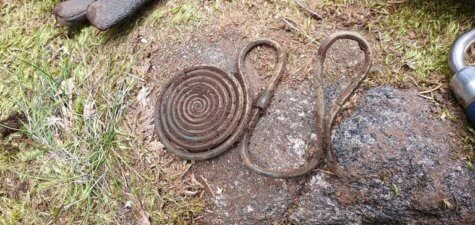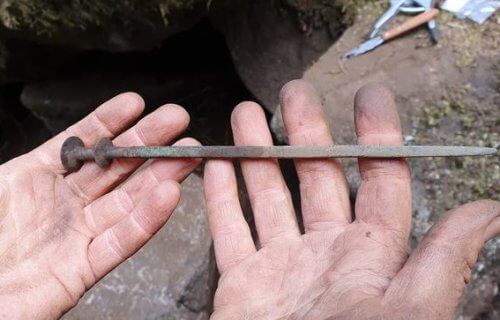
GOTHENBURG, Sweden — Scientists have revealed a collection of ancient artifacts, discovered by Swedish citizen Tomas Karlsson, which they say date back to the Bronze Age. Karlsson reported the findings to the Anglisås Administrative Board after stumbling upon them in a forested area. The findings date back approximately 2,500 years and researchers say a local animal likely unearthed them.
“Once it became apparent that this might be a hoard, the decision was taken to carry out an archaeological dig,” says Pernilla Morner, the curator at the Cultural Environment unit of the Västra Götaland County Administrative Board, in a university release.
Still in amazing condition
Karlsson led archaeologist Mats Hellgren to the area to begin the dig. Hellgren says it was surprising to find the artifacts in such great shape.
“Initially I thought these might be recent copies, but that turned out not to be the case,” Hellgren says.

Hellgren excavated 50 different pieces, most of which come from a nearby cave. His team found approximately 20 percent underneath a large rock in the cave. Researchers say although this particular area has no previous historical connection to human activity in ancient times, they retrieved several high quality items still in great condition after all these centuries.
“All the artifacts were essentially intact. For them to be so well preserved is unique, and it is likely they would have remained there unless an animal had decided to build its nest there,” says Madelene Skogberg, conservator at the Cultural Affairs Committee within Region Västra Götaland.
The next preservation technique for these artifacts will attempt to pull out the decoration and other ornate details.
“There are several interesting dimensions to this from a research perspective. This find poses whole new questions,” says Johan Ling, Professor of Archaeology at the University of Gothenburg, who participated in the dig.
Modern science making archeology easier
The archaeological procedures researchers used in the current excavation have a considerable edge over those from 100 to 200 years ago. Laser scanning, for instance, helped the team examine the dirt around each piece. Metal detectors played a crucial role in the discovery of the majority of the artifacts.
“The artifacts are from the Late Nordic Bronze Age, approximately 700-500 BCE. At the very least, this is in the top three of the best finds ever. They are extremely exclusive objects,” Ling reports. “They have also been in extremely good conditions for their preservation. It is very rare to see quality of this kind.”
Study authors believe elite women of the Bronze Age may have worn these items, which signified their social standing.
“They would have worn them from head to toe! We have recovered torcs, large armlets, spiral brooches (fibulae), and clasps which were used for textiles. The most special of all are the large, essentially intact anklets that would have been worn by the women,” Ling adds.
Additionally, researchers discovered a celt (a hollowed-out ax) and remains from bronze molds among torcs, cape pins, spiral pendants, chains, and a tutulus (a decorative brooch on garments or belts). The team also unearthed a goad, which may have been a horse spur, during the excavation.
Treasures all around Europe
Such artifacts are prevalent in the northern parts of Germany and Poland, where archaeologists often come across them during their investigations. The goad, for example, is similar to one unearthed in Denmark. This is the first one archaeologist have found in Sweden.
“This demonstrates that there was some degree of contact with these groups,” Ling continues.
Researchers believe someone thousands of years ago deliberately placed the objects in this location, indicating it’s the site of some sort of hoard or cache.
“This may have been in connection with burial in order to facilitate their use in the afterlife. But more likely as a way of signaling their status: ‘I can afford to sacrifice some of my affluence!’” Ling says.
According to him, it is critical for the team to conduct a more specific study of the region to determine if there are any additional hoards in the area. The restoration of the artifacts will take a long time and it’s not certain what will happen to them thereafter. The Swedish National Heritage Board will make the final choice, although it seems probable that they will end up in a historical site or museum in the area.

Since no burial has been associated with this find, it seems more likely to me that these were cached because the ?traders? Carrying them encountered a problem, be it animal or human, and hid them before a fight which I’d suspect they lost. Whether the carriers were traders, or ppl charged with delivering the cache to a displaced Dane, is worthy of debate.
Who actually cares it’s all meaningless otherwise they would never have or be death.